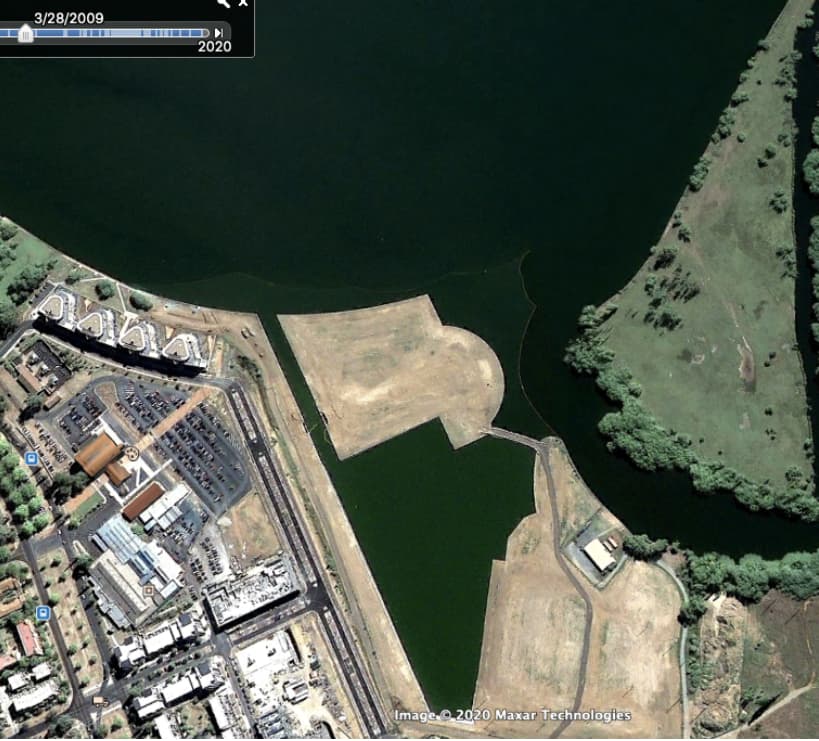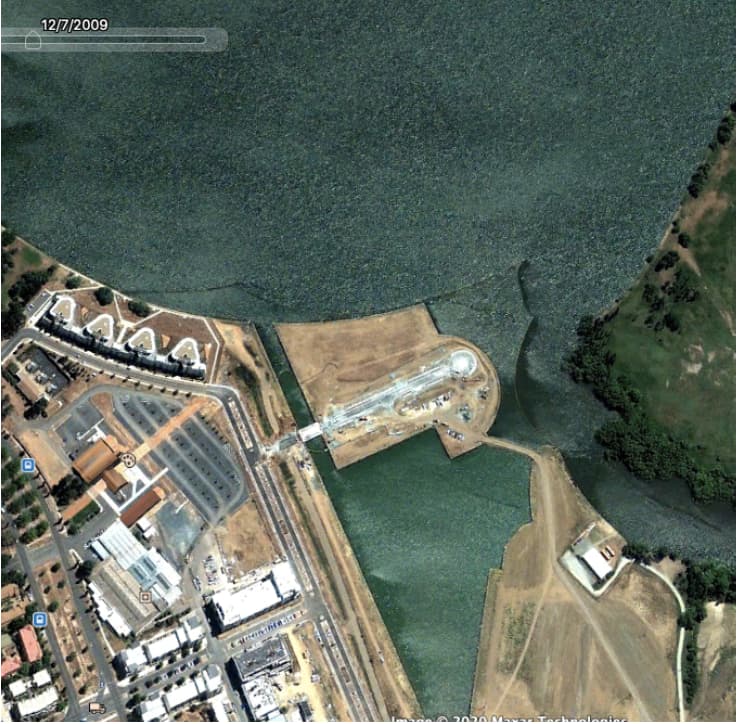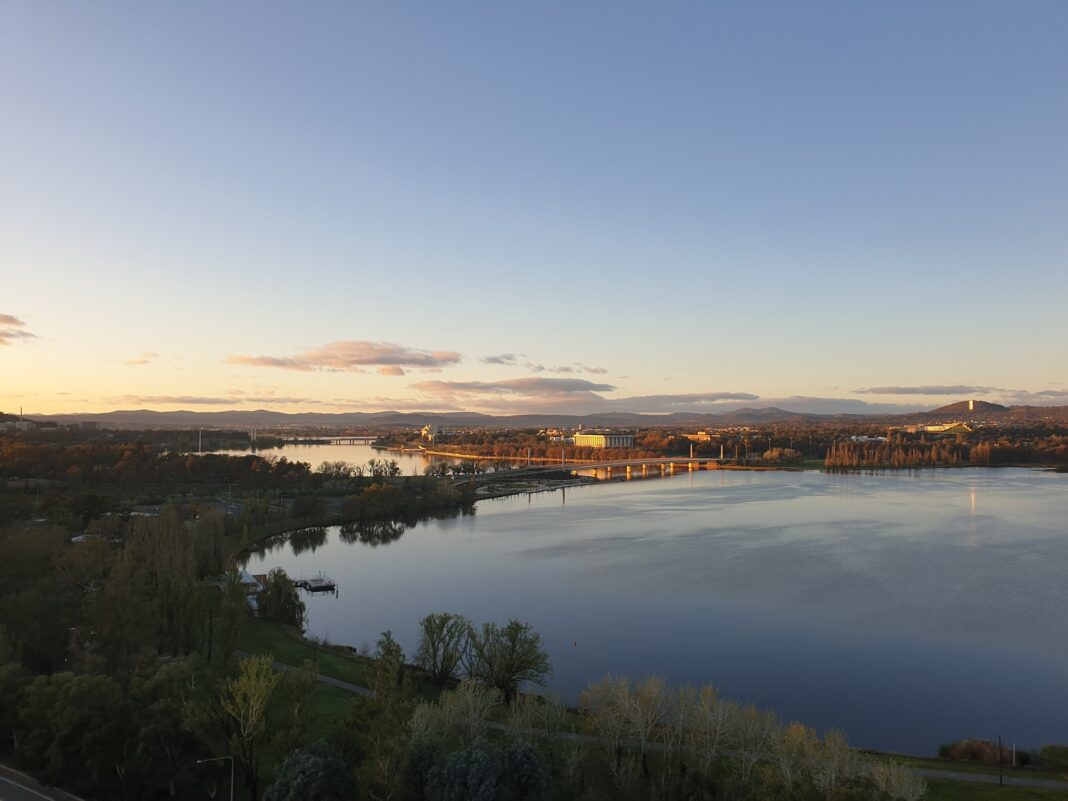The proposed Acton Waterfront at West Basin is meant to be a vibrant cultural and entertainment precinct on a lakeside promenade – but a community group fears that it could be an ecological hazard instead.
The ACT Government acquired 2.8 hectares of federal land at West Basin in March. Work began in September to realign the lake edge and build 500 metres of boardwalk at Henry Rolland Park. According to the Government, the new lake edge will be consistent with architect Walter Burley Griffin’s original plan connecting the city centre and the lake.
But the Lake Burley Griffin Guardians – a voluntary group established in 2015 to protect the lake – believe the Acton Waterfront development could create a toxic blue-green algal bloom that would threaten fish and wildlife (such as endangered platypus that have occasionally been spotted in the lake).
Control measures such as silt fences have been installed within the worksite on the lake edge and in the lake to prevent run-off or contamination which can contribute to algae growth, an ACT Government spokesperson stated.
They said workers continuously monitor these silt fences, which are inspected at least once each week and immediately after heavy rainfall.
But the Guardians worry that the silt fences are ineffectual. West Basin waters, they say, have become muddied and discoloured from lakebed disturbance and turbulence, despite the double row of silt curtains. Although silt curtains were installed in the East Basin during the Kingston Foreshore works in 2009, Guardians convener Juliet Ramsay said:
“The silt curtain didn’t protect the area at all. They had one of the worst blue-green algae blooms in the history of the lake.”


Ms Ramsay worries that algae growth in West Basin could be even worse because it is a backwater, with poor water flow, while the Molonglo River flowed past Kingston Foreshore.
“This is what we are concerned will happen in West Basin, and spread across the lake, killing platypus, fish, and other creatures,” Ms Ramsay said.
The Guardians are also concerned that the soft lake edge mix of planted species, weeds, beech trees, and rocks – habitat for native species – has been destroyed. The hard edge replacement, they believe, will result in reduced water purification.
“The purifying plants that were planted on the edge of West Basin have all gone now, along with the trees,” Ms Ramsay said.
“These things are very damaging for wildlife. There’s a lot more turbidity in the water, which encourages nitrogen growth and damage. That encourages bacterial growth that dies and create this toxicity.”
The ACT Government, however, classify the area as having only a low level of environmental importance. Before work began, the National Capital Authority, ACT Government, and the City Renewal Authority commissioned independent experts to conduct environmental studies, which are reviewed regularly.
“There is no evidence of any significant or important wildlife habitat or endangered species in the area which is designated for the project,” the spokesperson said.
That includes platypus. The Guardians are concerned that platypus – already on the brink of extinction – will be threatened. The animals breed in the Molonglo and Queanbeyan rivers that flow into the lake; they have been seen foraging on the edge of the West Basin, and caught in traps set for crayfish, Ms Ramsay said.
The Government does not have exact numbers for platypus but notes that five sightings have been reported to ACT Waterwatch since August 2018.
However, no evidence of platypus burrows was found along the lake edge at Acton where construction works are proposed, according to a review of the site, the spokesperson said. While it is possible that platypus may visit West Basin while they roam their territory, environmental consultants and workers have not seen any, they said.
Tthe ACT Government state that the new Acton Waterfront, its public spaces, and foreshore areas will provide new habitats for wildlife, including waterbirds. Environmental consultants inspect the worksite each month to ensure environmental protection measures are maintained and effective, and to check for wildlife activity. All workers are briefed about environmental issues, and how to manage and minimise impacts; work on site will stop if any threatened species are found.
Water-sensitive urban design techniques will improve the quality of urban stormwater entering the lake, the spokesperson continued. The government may also create wildlife corridors and access to the lake for native animals as part of the landscape design treatment.
For more news:



